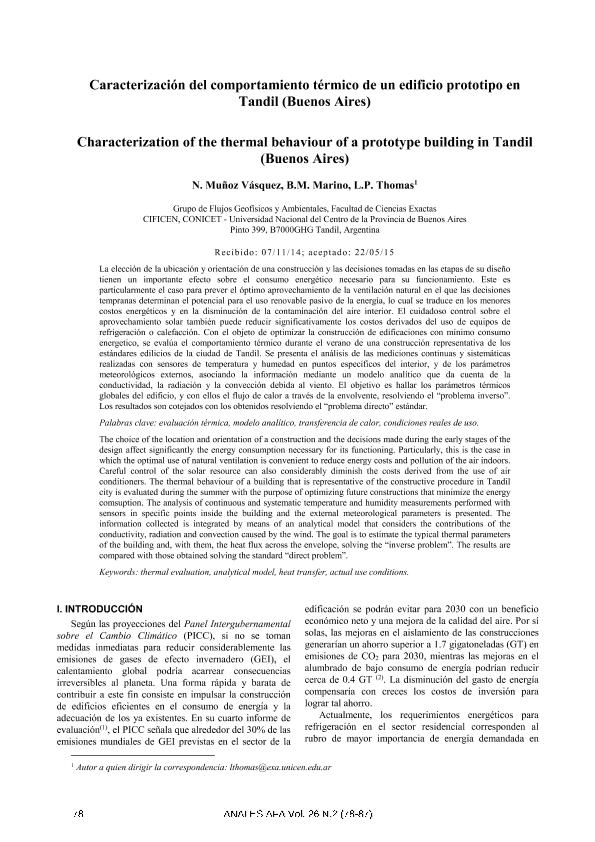Artículo
La elección de la ubicación y orientación de una construcción y las decisiones tomadas en las etapas de su diseñotienen un importante efecto sobre el consumo energético necesario para su funcionamiento. Este esparticularmente el caso para prever el óptimo aprovechamiento de la ventilación natural en el que las decisionestempranas determinan el potencial para el uso renovable pasivo de la energía, lo cual se traduce en los menorescostos energéticos y en la disminución de la contaminación del aire interior. El cuidadoso control sobre elaprovechamiento solar también puede reducir significativamente los costos derivados del uso de equipos derefrigeración o calefacción. Con el objeto de optimizar la construcción de edificaciones con mínimo consumoenergetico, se evalúa el comportamiento térmico durante el verano de una construcción representativa de losestándares edilicios de la ciudad de Tandil. Se presenta el análisis de las mediciones continuas y sistemáticasrealizadas con sensores de temperatura y humedad en puntos específicos del interior, y de los parámetrosmeteorológicos externos, asociando la información mediante un modelo analítico que da cuenta de laconductividad, la radiación y la convección debida al viento. El objetivo es hallar los parámetros térmicosglobales del edificio, y con ellos el flujo de calor a través de la envolvente, resolviendo el “problema inverso”.Los resultados son cotejados con los obtenidos resolviendo el “problema directo” estándar. The choice of the location and orientation of a construction and the decisions made during the early stages of the design affect significantly the energy consumption necessary for its functioning. Particularly, this is the case in which the optimal use of natural ventilation is convenient to reduce energy costs and pollution of the air indoors. Careful control of the solar resource can also considerably diminish the costs derived from the use of air conditioners. The thermal behaviour of a building that is representative of the constructive procedure in Tandil city is evaluated during the summer with the purpose of optimizing future constructions that minimize the energy comsuption. The analysis of continuous and systematic temperature and humidity measurements performed with sensors in specific points inside the building and the external meteorological parameters is presented. The information collected is integrated by means of an analytical model that considers the contributions of the conductivity, radiation and convection caused by the wind. The goal is to estimate the typical thermal parameters of the building and, with them, the heat flux across the envelope, solving the “inverse problem”. The results are compared with those obtained solving the standard “direct problem”.
Caracterización del comportamiento térmico de un edificio prototipo en Tandil (Buenos Aires)
Título:
Characterization of the thermal behaviour of a prototype building in Tandil (Buenos Aires)
Fecha de publicación:
09/2015
Editorial:
Asociación Física Argentina
Revista:
Anales AFA
ISSN:
0327-358X
Idioma:
Español
Tipo de recurso:
Artículo publicado
Clasificación temática:
Resumen
Archivos asociados
Licencia
Identificadores
Colecciones
Articulos(CIFICEN)
Articulos de CENTRO DE INV. EN FISICA E INGENIERIA DEL CENTRO DE LA PCIA. DE BS. AS.
Articulos de CENTRO DE INV. EN FISICA E INGENIERIA DEL CENTRO DE LA PCIA. DE BS. AS.
Citación
Muñoz, Natalia; Marino, Beatriz Maria; Thomas, Luis Pablo; Caracterización del comportamiento térmico de un edificio prototipo en Tandil (Buenos Aires); Asociación Física Argentina; Anales AFA; 26; 2; 9-2015; 78-87
Compartir




